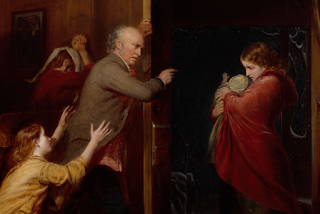Getting ready for Joan Miró: The Ladder of Escape @ Tate
There are only two days until Joan Miró: The Ladder of Escape opens at Tate Modern, so I thought that I should put together an entry to help me understand how I'm going to approach the exhibition and write about it. Miró first came to my attention in my teens, when I remember buying a print of Blue II (1961) that I subsequently had framed and hung in my room along with Matisse's Creole Dancer (1950). His oeuvre was certainly formative in my 'awakening to art', as it were, which makes the Tate's "first major retrospective of [his] work in London in nearly 50 years" an exciting destination. Now that I've started this blog, however, the importance of visiting has redoubled: I'd like to use the experience to learn how the curators staged the exhibition and then to speculate on the use of museum space as a learning environment for art.
The roughly 150 art works on display will include drawing, prints and sculptures alongside paintings, which from a learning point of view is particularly exciting, since spectators will be able to appreciate the fullness of the artist's practice. We will see how Miró worked through three dimensions (if you include sculpture, say), and was not the 'flat' or two-dimensional painter some critics have claimed him to be. It's also incredibly exciting that five triptychs that have never been hung together have been gathered for the exhibition; these have apparently been mounted in semi-hexagonal spaces, so that the works incorporate - perhaps envelop - the spectator.
To help me approach the exhibition I have devised the following three questions. These will structure my first visit and be the particular concerns of my first blog entry about Joan Miró: The Ladder of Escape, due up around midday this Thursday.
The roughly 150 art works on display will include drawing, prints and sculptures alongside paintings, which from a learning point of view is particularly exciting, since spectators will be able to appreciate the fullness of the artist's practice. We will see how Miró worked through three dimensions (if you include sculpture, say), and was not the 'flat' or two-dimensional painter some critics have claimed him to be. It's also incredibly exciting that five triptychs that have never been hung together have been gathered for the exhibition; these have apparently been mounted in semi-hexagonal spaces, so that the works incorporate - perhaps envelop - the spectator.
To help me approach the exhibition I have devised the following three questions. These will structure my first visit and be the particular concerns of my first blog entry about Joan Miró: The Ladder of Escape, due up around midday this Thursday.
- What narrative or narratives does the show's curation seem to imply?
- How is the exhibition a learning experience?
- How does the staging of Miró here compare with the staging of Cy Twombly: Cycles and Seasons?

Comments
Post a Comment